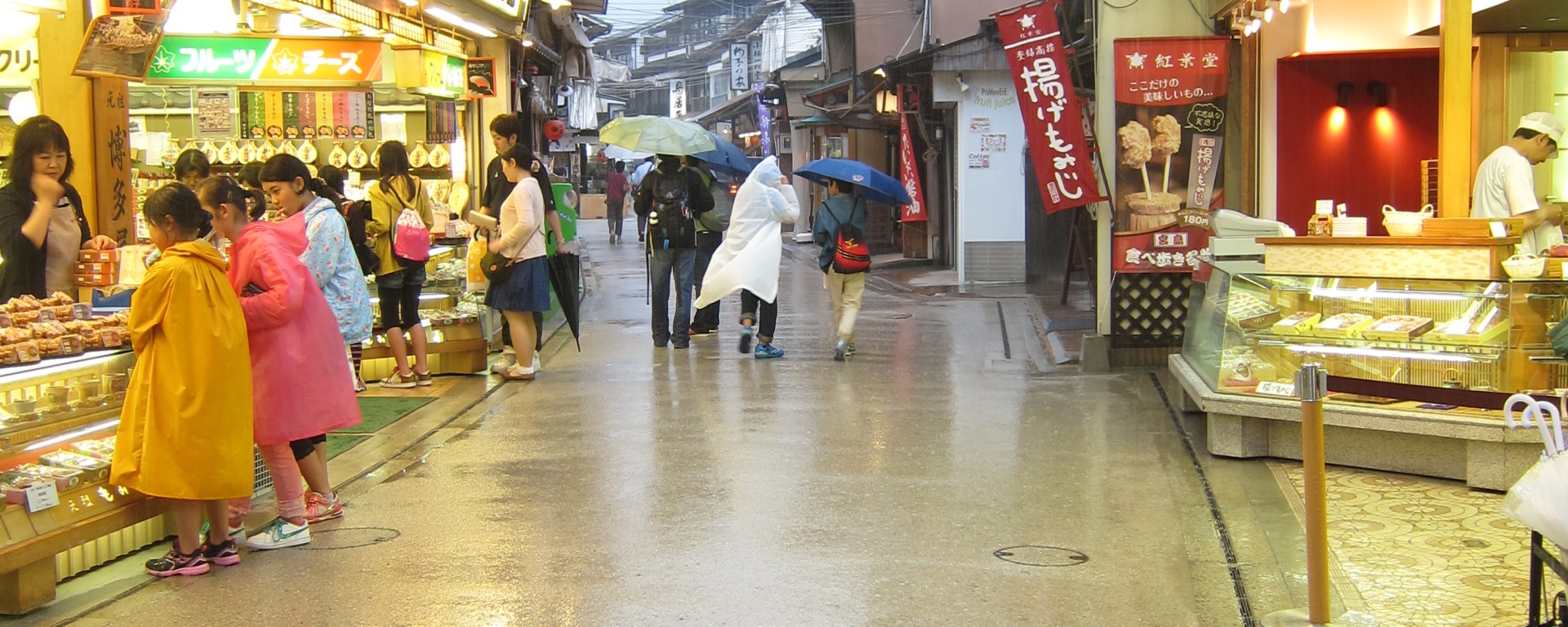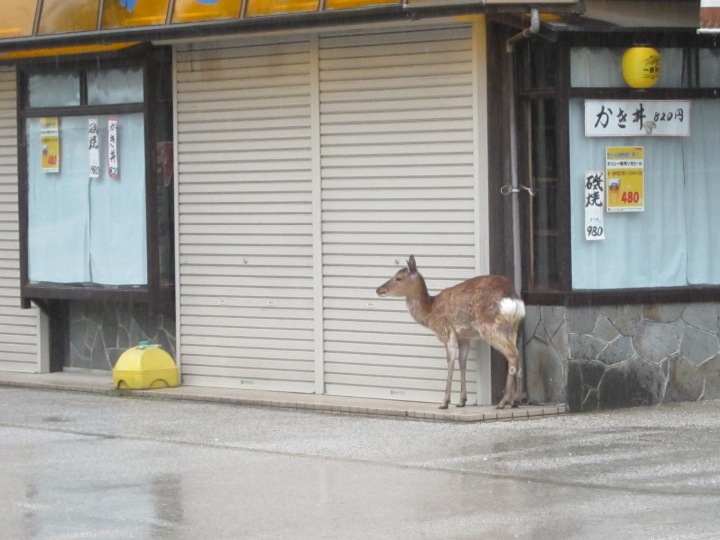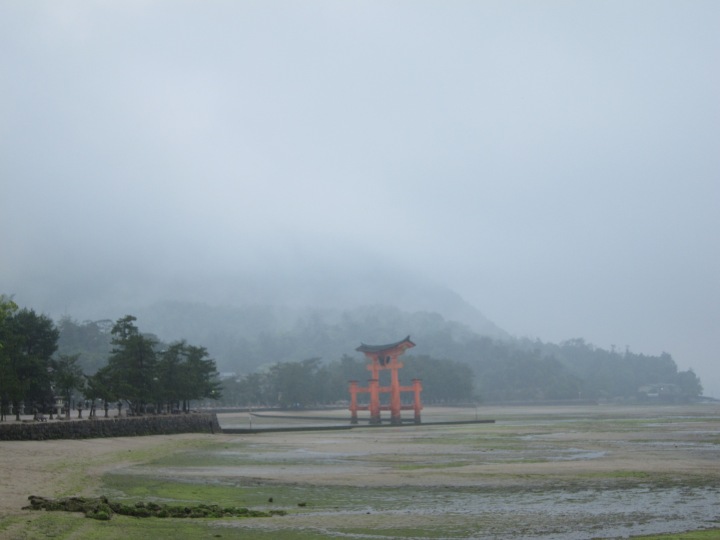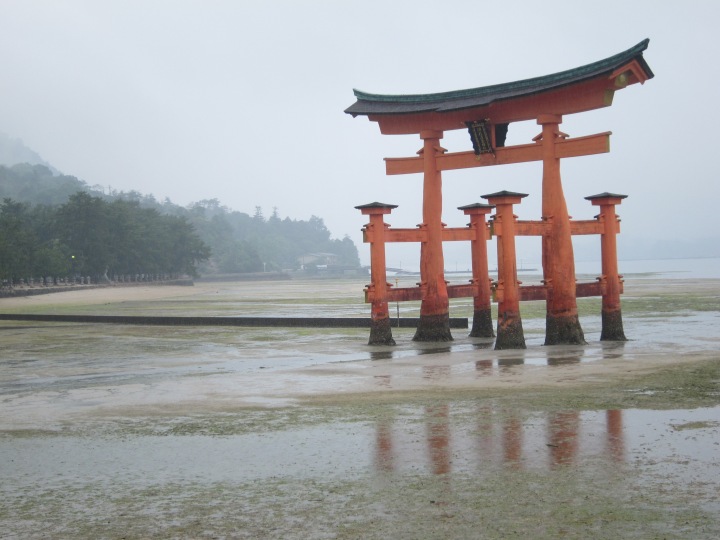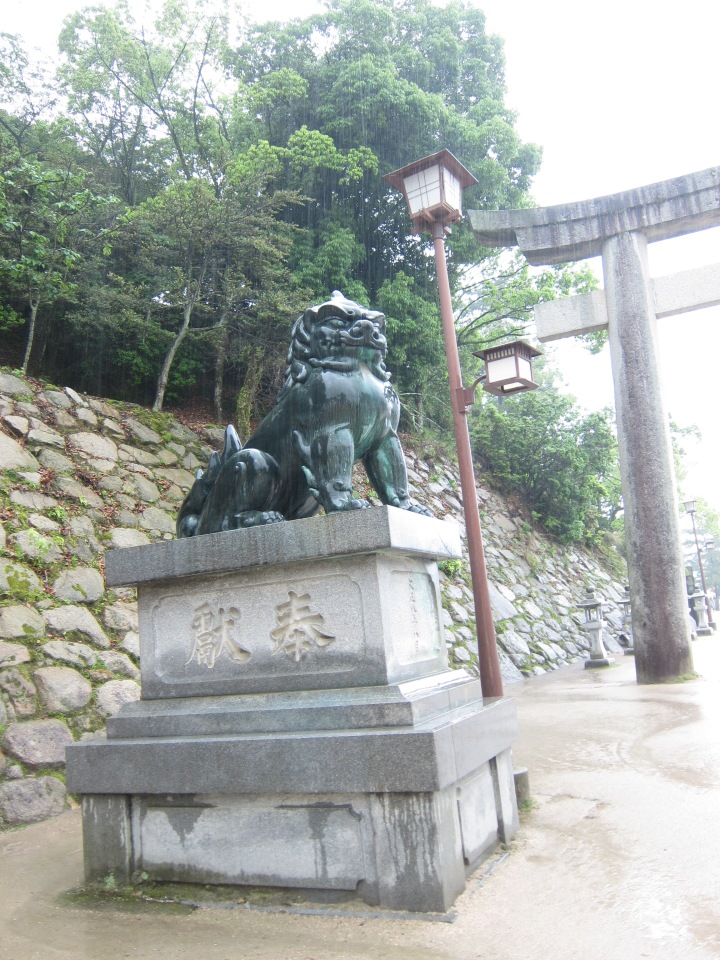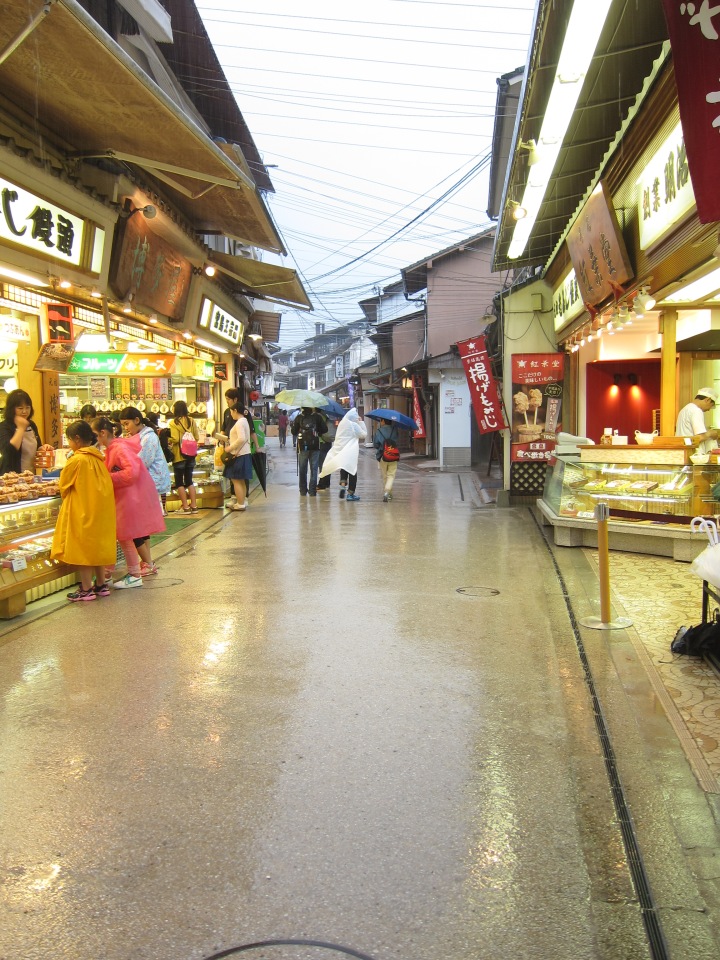The morning I left Kyoto, my first task was to lighten my load. I had decided to use takkyubin, the (very affordable) Japanese luggage-forwarding service, to send my larger suitcase on ahead of my to Takamatsu, so I didn’t have to spend the next two days lugging it on and off trains and ferries. The young man staffing the hotel desk helped me fill out the forms, and in less than ten minutes I was setting off for the station.
I bought breakfast at a French-style bakery near the shinkansen platform. It was a little hit and miss again – what I had thought was a simple soft roll turned out to be full of delicious custard, and the tiny doughnut I’d bought for dessert was unexpectedly studded with candied peel. I had also decided to try Calpis, a fermented milk-based soft drink that is extremely popular in Japan (the name is derived from “calcium”, I think, although it sounds less than appetising to English speakers!). I bought a bottle from a vending machine on the platform to drink on the train, but I have to say I am not a fan. It was vaguely milky, vaguely sour and just generally weird. Still, new experiences!
I arrived in Hiroshima right on time (of course), and stashed my small overnight bag in a station locker before heading out to explore the city. It was rather a grey day, with intermittent drizzle, but I was soon aboard the Maple-oop sightseeing bus and on my way to the Peace Memorial Park.
For me, the most powerful memorial to the bombing in 1945 is not the museum (although this is excellent), but the Peace Memorial Park itself. The enormous, open space used to be the commercial district – the built-up, bustling hub of the city. All of that was completely flattened, and eventually replaced with the manicured lawns and neat hedges you see today. Despite its popularity with tourists and visitors, the park feels eerily empty when you think about how many buildings and people would have been packed into the same space before the bomb.
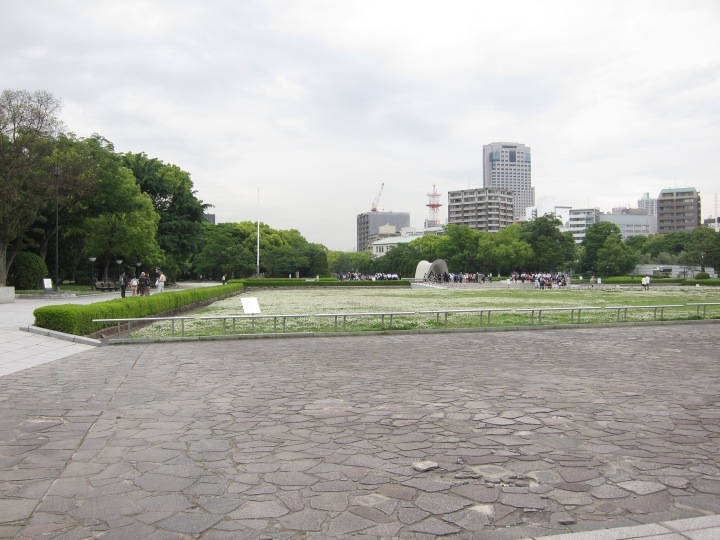
The Cenotaph for A-Bomb Victims is a stylised tomb, beneath which is a stone chest containing the names of atomic bomb victims. It is an extremely popular place for photographs, especially group photographs, and while I was there I saw several school groups and tour groups lining up in rows.
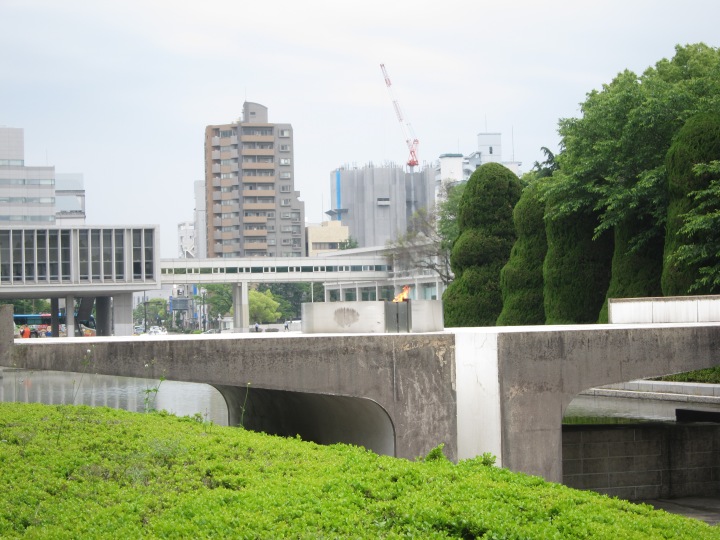
The Children’s Peace Memorial is surrounded by cases full of origami cranes. The story behind this is that a girl called Sasaki Sadako, who was two years old when the atom bomb was dropped, developed leukaemia after exposure to radiation. Following an old Japanese tradition that anyone who folds a thousand origami cranes will be granted a wish, she started to fold cranes in the hope of being cured. She died, aged twelve, before she had finished, but her classmates took up the task, and raised funds for a memorial to her and all the other child victims of the bomb.
Today, schoolchildren bring origami cranes of their own to add to the memorial. I watched two groups carry their enormous plastic bags full of folded cranes to the memorial, each pausing to give a solemn speech.
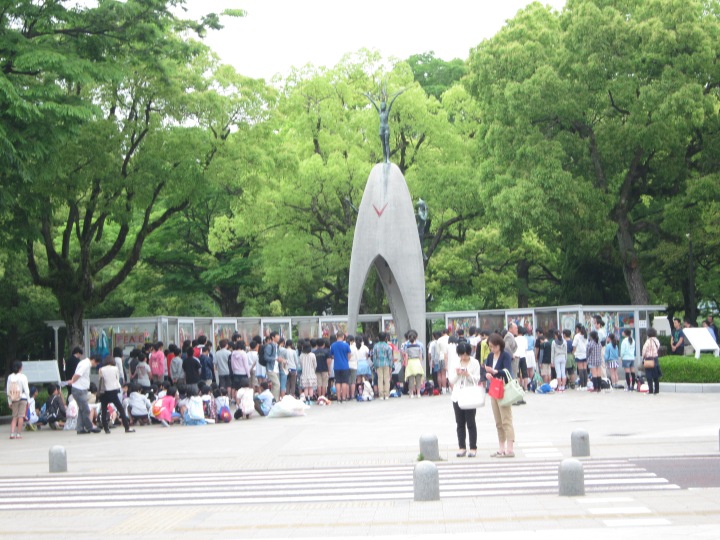
The Peace Memorial Museum charges an extremely low entrance fee (¥50 (about 25p)) and takes the task of explaining the devastation caused by the atom bomb very seriously. There are cases full of everyday items – lunchboxes, school uniforms, a bridge girder, a child’s tricycle – all burned and warped by the blast. Television screens display the names of the dead and a diorama shows the ball of flame poised above Hiroshima. There is also a lot of information about the different ways that the bomb killed people, based on their proximity to the epicentre. Harrowing, but a very important museum and an extremely powerful argument against nuclear weapons. I believe every politician should be obliged to visit at least once.
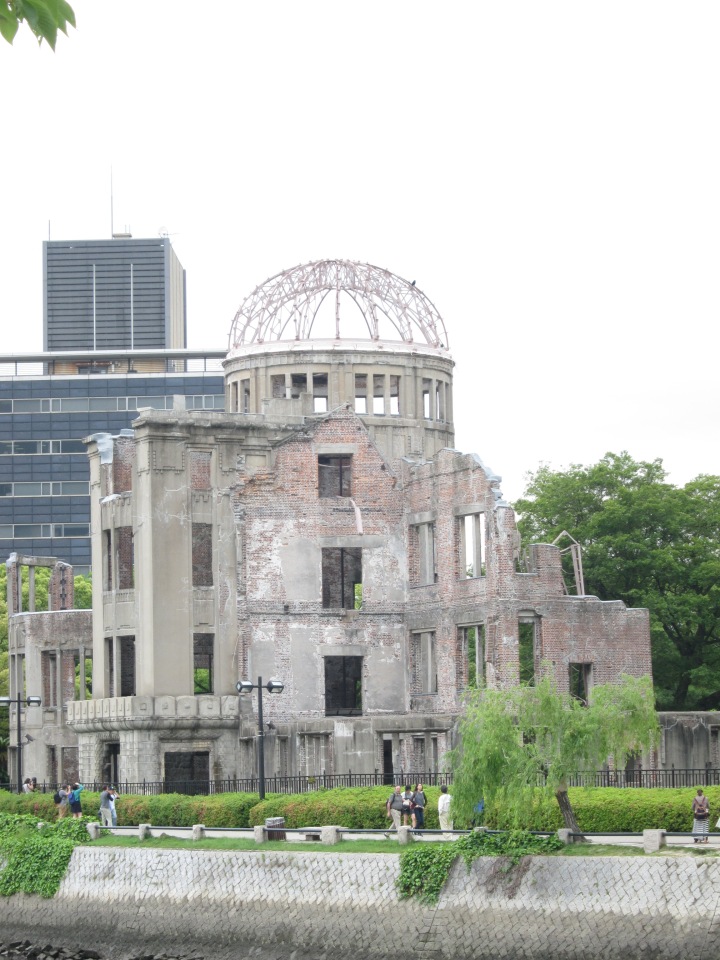
The A-Bomb dome is another powerful reminder, and the city has been careful to leave enough space around it that it retains its impact. It faces out over a river, which is spanned by pretty bridges and has pleasant walkways on each bank.
I would have liked to explore the area further, as I am sure there is much more to Hiroshima than its nuclear history, but it was starting to rain quite hard by this point and I has Miyajima next on my itinerary.
After a quick lunch in an underground shopping centre (udon with rice and pickles, which I managed to order in pretty good Japanese), I returned to the station to collect my bag and caught the train to the ferry port that serves Miyajima. It was bucketing down, and I had to dodge some enormous puddles as I ran for the shelter of the ferry terminal.
The voyage was only about ten minutes long. I couldn’t really make out the famous floating torii (shrine gate), as the windows were running with too much water (it was like being in a giant car (ferry?) wash), so it was quite entertaining to listen to the recording on the tannoy praising the view.
My first impression of the island was of rain and miserable-looking deer:
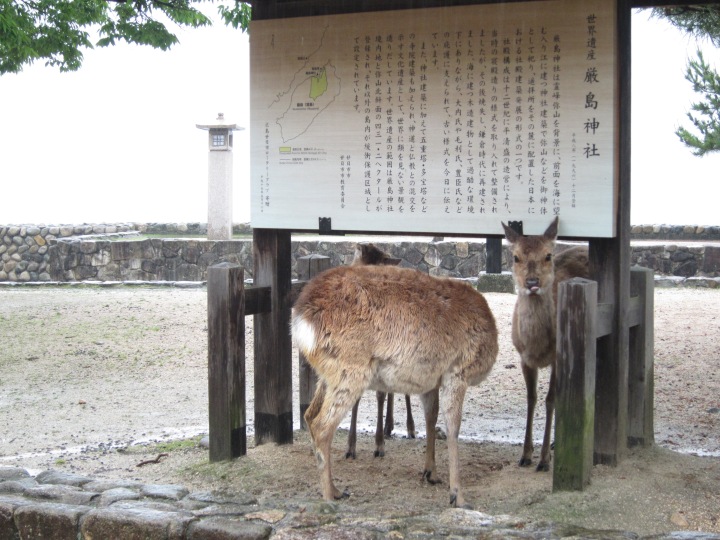
Almost all the humans on Miyajima had retreated inside, but the deer had no such luxury and were resorting to whatever dry places they could find. There are lots of signs up warning people that the deer are wild animals and not to feed them, but they looked much less interested in people than in the shelter offered by shop awnings.
Someone had the very bright idea to put up a map right outside the ferry port showing where all the hotels are located. I found mine very easily (I was staying at Hotel Sakuraya, which I recommend – one of the cheaper options on the island, but very conveniently placed and comfortable, with helpful staff) and was soon dripping all over the floor of the lobby.
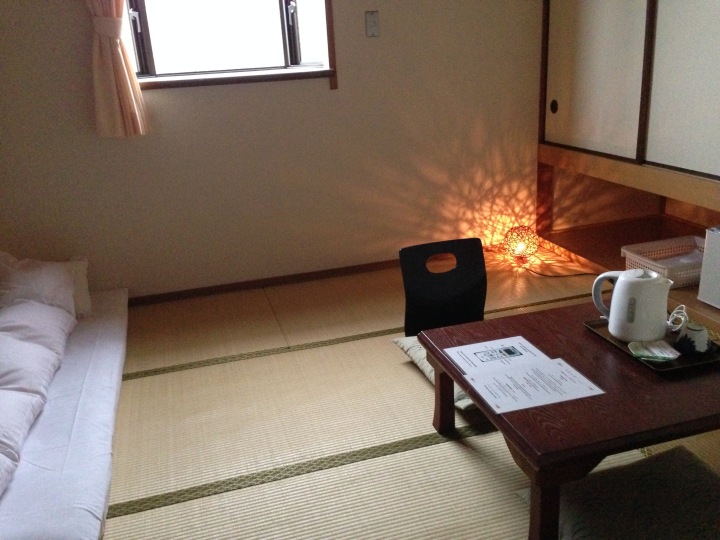
I was staying in a ryokan-style room, which was very cosy after the downpour, and I was very tempted to just crawl into bed and enjoy being dry. I decided not to be such a wimp, though, and stayed just long enough to eat the complimentary traditional sweets and change into drier shoes.
One advantage of the rain was that there were very few other people out exploring, although I did see quite a few locals on the beach, harvesting some sort of shellfish. Since the tide was out, I could see the secret of the “floating” torii – its (rather muddy) legs are usually semi-submerged.
The rain had made all the trees on the island look very green, especially in contrast to the misty low cloud, and the vermilion paint on the torii blazed against it. Still, I was hoping I’d have a chance to see it in less damp conditions in the morning!

I decided against squelching too far afield, and returned via the little shopping street, which was still doing fairly brisk business despite the weather. A gang of poncho-clad schoolchildren yelled “HELLO!” quite ferociously, and insisted on high-fiving me as I passed.
When I checked into my hotel, I had been given a map of the restaurants in the area, showing which ones would be open in the evening. This turned out to be very useful, as most of them seem to close at 5ish. Not all, however, and I found a family-run okonomiyaki (a savoury pancake, usually including layers of cabbage and pork) restaurant not too far from my hotel. I was the only customer, but the owners and their small son were sitting at one of the tables watching a television on the wall. I had a Hiroshima-style okonomiyaki, which included noodles and was very tasty and wonderfully warming.
Having thawed out internally, I returned to the hotel for a hot shower and an early night, and fell asleep listening to the rain on the window.

